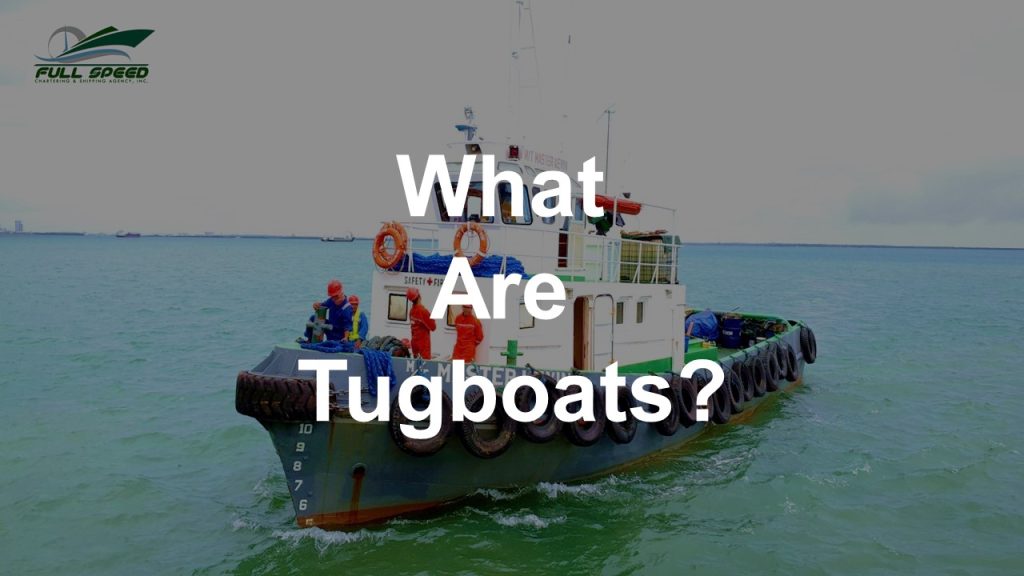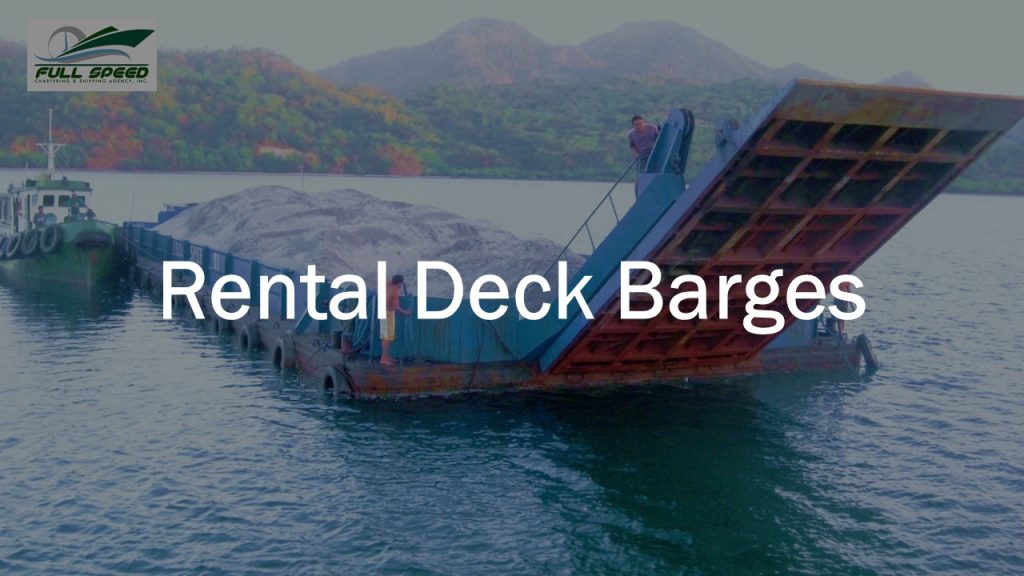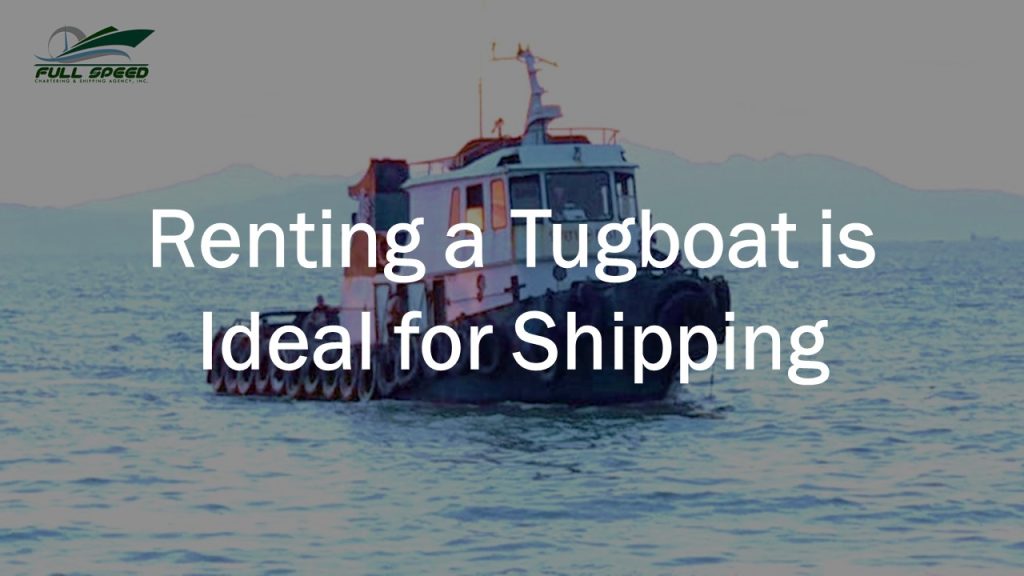Variation 1: Imagine the bustling ports, the heart of the Philippine maritime industry. Ships docked as far as the eye can see, loading and unloading goods that keep our economy afloat. Yet, amidst this maritime symphony, it is often the unsung heroes – tug and barge in Cebu – that silently orchestrate the smooth flow of cargo. In this article, we will uncover 7 remarkable ways in which these modest workhorses are revolutionizing Cebu’s maritime industry and propelling it toward greater heights.
Click here to view our tug and barge in Cebu for time charter and shipping operations.
The Role of Tug and Barge in Cebu
Tug and barge operations play a vital role in the maritime industry of Cebu, serving as the backbone of transportation for goods and materials. These versatile vessels are able to navigate through shallow waters and tight spaces, making them ideal for accessing remote areas that larger ships cannot reach. This capability is especially crucial in an archipelagic country like the Philippines, where many smaller islands rely heavily on marine transport.
In addition to their ability to access hard-to-reach locations, tug and barge in Cebu provide cost-effective transportation solutions. By using barges instead of traditional cargo ships, companies can save on fuel costs and reduce overall expenses. This affordability makes tug and barge operations an attractive option for transporting bulk items such as construction materials, agricultural products, or even hazardous goods.
Moreover, these smaller vessels have minimal environmental impact compared to larger ships. With their lower carbon emissions and reduced noise pollution, tugboats and barges offer a greener alternative to conventional shipping methods. Embracing this sustainable approach can help preserve the natural beauty of Cebu’s coastal areas while still meeting the demands of an ever-growing economy.
The role of tug and barge in Cebu extends far beyond simple transportation. They are instrumental in connecting communities, supporting economic growth with efficient logistics solutions, and promoting environmentally friendly practices within the maritime industry. As advancements continue in technology and infrastructure development in Cebu’s ports and waterways, we can expect tugboat and barge operations to evolve even further into
Are You Looking for Tug and Barge in Cebu for Time Charter?
Full Speed Chartering and Shipping Agency, Inc. (FSCSAI) in the Philippines offers exceptional tug and barge services for time charter, providing the maritime industry with reliable transportation solutions. With their commitment to quality and cost-effectiveness, FSCSAI is a trusted partner for businesses looking to transport cargo efficiently and securely.
- Email us: info@fullspeedchartering.com
- Mobile, Viber, WhatsApp: +63 939 3753224
- Facebook Messenger: Click here
- Click here to inquire
One of the ways FSCSAI stands out is through its well-maintained fleet of tug and barge in Cebu, Visayas, Metro Manila, Luzon, Davao, and Mindanao areas. These vessels are equipped with state-of-the-art technology, ensuring smooth operations and minimizing delays or disruptions. Their experienced crew members are highly skilled professionals who understand the intricacies of navigating through various water conditions, making them adept at handling any challenges that may arise during transportation.
Furthermore, FSCSAI focuses on delivering personalized customer service to meet specific client requirements. They take pride in understanding each customer’s unique needs and tailoring their services accordingly. Whether it’s transporting heavy equipment or bulk cargo, FSCSAI has the expertise to provide safe and efficient solutions while maintaining cost-effectiveness.
Choosing FSCSAI for tug and barge services in Cebu means opting for reliability, efficiency, and unparalleled support throughout your shipping journey. With their commitment to quality service provision and personalized solutions for customers’ needs, they play a vital role in advancing the maritime industry in Cebu City and the entire Philippines.
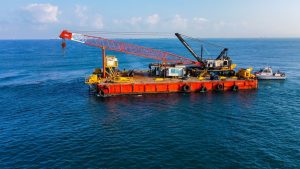
How Tug and Barge in Cebu Can Help the Shipping Industry?
The industry of tug and barge in Cebu plays a crucial role in enhancing the efficiency of the shipping industry. One of the ways this is achieved is through the transportation of goods and products across waterways. Tugboats are responsible for towing barges, which are flat-bottomed vessels used for carrying bulk cargo such as coal, grain, and construction materials. The use of tug and barge services allows for larger volumes of goods to be transported at once, reducing costs and minimizing environmental impact.
Additionally, the operations of tug and barge in Cebu provide flexibility in terms of accessing various ports that may not be easily accessible by larger ships. The shallow draft of barges enables them to navigate narrow channels and reach smaller harbors, providing a cost-effective solution for transporting goods to remote locations. This can greatly benefit industries such as mining or oil exploration, where access to specific regions is essential.
Moreover, tugboats play a crucial role in ensuring the safe docking and undocking of vessels in ports. With their powerful engines and maneuverability, they assist large ships in navigating tight spaces or challenging weather conditions during arrival or departure. By providing assistance to these movements, tugboats enhance safety standards while also improving overall operational efficiency.
The services and utilization of tug and barge in Cebu significantly contribute to the growth and development of the shipping industry by increasing transport capacities, enabling access to remote areas, and enhancing safety standards during port operations. As such, it cannot be understated how vital these services are for maintaining an efficient
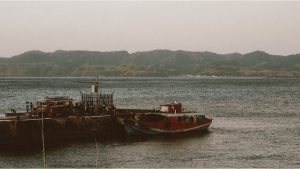
Here are the top 6 ways tug and barge in Cebu can help maritime operations:
1. Tug and Barge in Cebu Can Increase Efficiency in Cargo Transportation
Tug and barge services in Cebu offer a host of benefits that can greatly enhance the efficiency of cargo transportation in the region. One key advantage is their ability to navigate shallower waters and reach ports that are inaccessible to larger vessels. This means that goods can be transported directly from these smaller ports, eliminating the need for additional transshipment processes and reducing overall travel time.
Moreover, tug and barge operations provide greater flexibility in terms of scheduling and routes. These smaller vessels can adapt to changing weather conditions more easily and are not bound by fixed schedules like their larger counterparts. This allows for quicker response times in delivering cargo and ensures timely deliveries even during adverse weather events, thus minimizing disruptions to supply chains.
Furthermore, tug and barge services also present an environmentally friendly alternative compared to other modes of transportation. The smaller size results in lower fuel consumption, thereby reducing carbon emissions. Additionally, using barges instead of trucks for transporting goods helps alleviate congestion on roads while decreasing wear and tear on existing infrastructure.
All these advantages combined make tug and barge services an attractive option for cargo transportation in Cebu. By enhancing efficiency, providing greater flexibility, saving time and costs, as well as promoting environmental sustainability, this mode of transport has the potential to transform maritime operations for the better in Cebu.

2. Tug and Barge in Cebu are Proven to be Cost-Effective Shipping Solutions
Tug and barge in Cebu have long been a reliable and cost-effective solution for shipping goods in Cebu. The combination of a powerful tugboat and a sturdy barge allows for the transportation of large quantities of cargo at a fraction of the cost compared to traditional shipping methods. This is especially beneficial for industries that require the movement of heavy materials, such as construction, mining, and agriculture.
One key advantage of using tug and barge in Cebu is their ability to access remote areas with limited infrastructure. Unlike larger vessels that require deepwater ports, tugs and barges can navigate shallow waters, rivers, and even narrow channels. This flexibility opens up new possibilities for businesses operating in coastal or island communities where road or rail connections may be inadequate.
Moreover, tug and barge in Cebu offer more control over logistics planning as well as reduced transit times. By utilizing these smaller vessels, companies can bypass congested port hubs by delivering cargo directly to their desired destinations. As a result, there are fewer delays caused by congestion or port inefficiencies. This streamlined process minimizes downtime and ensures that goods reach their destination on time, allowing businesses to maintain efficient supply chains.
In summary, tug and barge in Cebu provide an effective alternative for transporting goods while also offering significant cost savings compared to other shipping methods. Their ability to access remote locations combined with faster transit times makes them an ideal choice for businesses looking to optimize their maritime operations.

3. Tug and Barge in Cebu Can Enhance Safety and Reducing Risks
The use of tug and barge in Cebu can greatly enhance safety and reduce risks in maritime operations. Tugboats are powerful vessels that are specifically designed to maneuver larger ships, providing them with assistance when navigating through narrow channels or busy ports. This is particularly beneficial in Cebu, where the port is often frequented by large container ships and cargo vessels. By utilizing tugboats, these larger ships can avoid potential collisions with other vessels or structures, preventing damage to both the ship itself and any surrounding infrastructure.
Furthermore, tug and barge in Cebu also contribute to reducing the risks associated with the transportation of hazardous materials. In Cebu, there may be a need to transport various dangerous substances such as petroleum products or chemicals. The utilization of specialized barges for this purpose ensures that these hazardous cargoes are transported safely without posing a threat to public health or the environment. These barges are equipped with the necessary safety features and containment systems to prevent spillage or leakage during transit.
Incorporating tug and barge in Cebu for maritime operations provides an added layer of safety by mitigating the risks associated with the navigation and transportation of hazardous materials. The presence of tugboats not only aids larger ships in maneuvering through bustling ports but also helps prevent potential accidents that could result in significant damage. Similarly, deploying specialized barges for transporting dangerous substances ensures that stringent safety measures are adhered to throughout the entire process, minimizing any potential negative impacts on the environment or local communities.
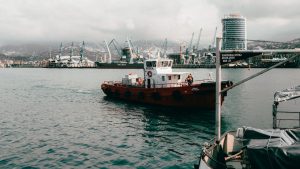
4. Tug and Barge in Cebu Can Support Local Economy and Generate Employment
The tug and barge in Cebu plays a crucial role in supporting the local economy by facilitating the transportation of goods and commodities. With its strategic location and reliable infrastructure, Cebu has become a hub for maritime operations in the Philippines. Tugboats and barges are used to transport various types of cargo, such as construction materials, agricultural products, and consumer goods, across the country.
Not only does this industry contribute to the efficient movement of goods, but it also generates employment opportunities for the local population. The need for qualified crew members, maintenance personnel, port workers, and logistics professionals ensures steady job creation in the region. Additionally, supporting industries such as ship repair facilities and fuel suppliers also benefit from the presence of tug and barge in Cebu.
By investing in modern tugboat technology and expanding their fleet size, companies operating in Cebu can further enhance their contribution to the local economy. This would not only increase efficiency but also attract more business opportunities that require reliable transportation services. Furthermore, government support through infrastructure development initiatives can further boost growth potential in this sector. Overall, leveraging the potential of tugboats and barges can significantly benefit both Cebu’s economy as well as provide employment opportunities for its residents.
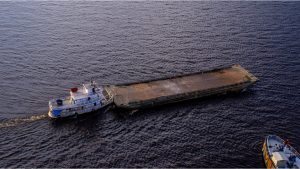
5. Tug and Barge in Cebu are collaborating with other maritime sectors
Tug and barge operations in Cebu are not working in isolation; they are actively collaborating with other sectors within the maritime industry to enhance overall operations. One notable collaboration is with container shipping companies that utilize tug and barge services for their cargo transportation needs. By working together, these sectors can ensure efficient and streamlined logistics, reducing delays and increasing productivity.
Another collaborative effort is seen between tug and barge operators and marine surveyors. Marine surveyors play a crucial role in assessing vessel conditions, ensuring compliance with safety regulations, and conducting inspections during loading and unloading processes. By working hand in hand, tug and barge operators can ensure that their vessels are always up to standard, minimizing risks associated with accidents or equipment failures.
Furthermore, the collaboration extends to marine fuel suppliers as well. Tugboats rely heavily on quality fuel supplies for smooth operations while carrying out towing tasks. Collaborating closely with reputable fuel providers ensures that there is a constant supply of clean fuel available at competitive prices for tugboat operators. This partnership guarantees uninterrupted services while also maintaining environmental sustainability by adhering to regulations related to emissions control.
These collaborations highlight how the tug and barge sector in Cebu is actively engaging with other maritime sectors to improve efficiency, safety standards, and sustainable practices, and ultimately contribute towards enhancing overall maritime operations in the region.
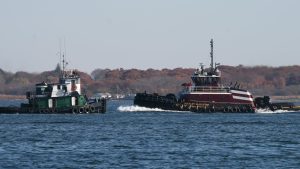
6. Tug and Barge in Cebu Can Enhance Port Infrastructure and Accessibility
One of the key benefits of utilizing tug and barge in Cebu is the enhancement of port infrastructure. With its strategic geographical location, Cebu serves as a major gateway for maritime operations in the Philippines. By employing tug and barge services, ports can efficiently handle larger vessels that cannot directly dock at their facilities due to size constraints. This not only improves port accessibility but also increases their overall capacity to accommodate more ships, leading to smoother operations and reduced congestion.
Moreover, tug and barge in Cebu can greatly contribute to improving accessibility, not just within ports but also across different islands. The Philippines is an archipelago consisting of over 7,000 islands, making transportation between them a challenging task. Tug and barge services provide a reliable means of transporting goods between islands, particularly those located in remote areas with limited infrastructure. By utilizing these services, businesses can now reach previously inaccessible regions and expand their market reach while promoting economic growth in those areas.
Furthermore, tug and barge in Cebu are flexible and versatile in nature. Unlike conventional shipping methods that rely solely on large carriers, tugboats can easily navigate narrow waterways where bigger vessels cannot venture. This allows for direct delivery to smaller ports or coastal communities that were previously overlooked due to limitations posed by traditional maritime practices. The increased flexibility provided by tugboats enables businesses to tap into new markets or connect with underserved communities without compromising efficiency or cost-effectiveness.
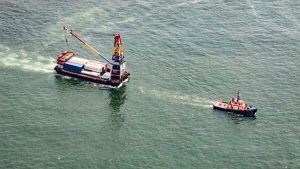
7. Tug and Barge in Cebu are Facilitating Sustainable Maritime Practices
Tug and barge in Cebu are not only essential for maritime operations but also play a significant role in facilitating sustainable practices. These vessels offer a more fuel-efficient and environmentally friendly alternative to traditional shipping methods, reducing carbon emissions and minimizing the impact on marine ecosystems. By utilizing tugboats and barges, companies can consolidate cargo into larger loads, thereby reducing the need for multiple trips by individual ships. This practice not only saves time and resources but also contributes to the overall sustainability of maritime operations.
Moreover, tug and barge in Cebu promotes intermodal transportation systems. By connecting different modes of transport, such as road, rail, air, and sea, these vessels enhance efficiency while reducing congestion on roads or at ports. The ability to transport goods seamlessly across various modes of transportation minimizes delays and improves the overall supply chain management process. This integration of different transportation methods not only benefits businesses by ensuring timely delivery but also has positive environmental impacts by decreasing traffic congestion and subsequently lowering greenhouse gas emissions.
Tug and barge in Cebu go beyond their basic utility in maritime operations; they are key facilitators of sustainable practices within the industry. From their fuel-efficiency advantages to promoting intermodal systems, these vessels contribute to a greener future for maritime transportation. Embracing these practices not only aligns companies with environmental goals but also ensures long-term economic viability through improved efficiency and reduced costs associated with traditional shipping methods. Cebu’s tugboats and barges are leading the way in demonstrating how sustainable practices can be integrated into maritime operations. With their fuel-efficient engines and advanced technologies, these vessels are setting a new standard for environmental responsibility in the industry.
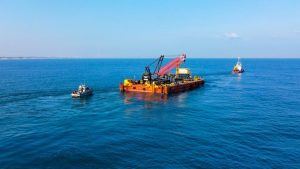
The Invaluable Contributions of Tug and Barge in Cebu
Tug and barge services have long been the unsung heroes of maritime operations in Cebu, Philippines. While they may not be as glamorous as large cargo ships or luxurious cruise liners, these humble vessels play a vital role in the seamless transportation of goods and materials across waters. They offer several invaluable contributions that are essential for smooth sailing.
Firstly, tug and barge provide efficient and cost-effective transport solutions for bulk cargo. These smaller vessels can navigate through shallow waters, narrow channels, and even reach destinations that larger ships cannot access directly. By utilizing tugs to push or pull barges stacked with containers or other goods, valuable time and money can be saved by avoiding congestion at traditional ports.
Furthermore, tug and barge services offer immense flexibility to adapt to changing demands in the maritime industry. Their relatively small size allows them to serve as feeder vessels between main ports and remote areas lacking infrastructure for large ships. This makes them particularly useful for reaching small islands around Cebu where accessibility is limited but necessary for various industries such as tourism or local communities dependent on regular supplies.
The contributions of tugboats and barges should not be underestimated when it comes to maritime operations in Cebu. From providing efficient transportation solutions to extending connectivity to remote areas, these humble vessels play a crucial role in keeping trade flowing smoothly throughout the region’s waters. Without their valuable services, the logistics challenges faced by businesses would be far greater, making them an indispensable part of Cebu’s maritime landscape.
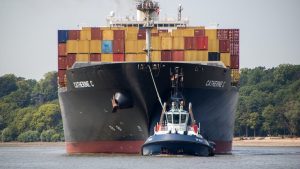
The Maritime Advantages of Utilizing Tug and Barge in Cebu
One of the key maritime advantages of utilizing tug and barge in Cebu is the ability to transport large and heavy cargo with ease. Tugboats have powerful engines that can pull barges loaded with goods, equipment, or materials, allowing for the transportation of bulk items that are difficult or even impossible to move using other means. This is especially beneficial for industries such as construction, mining, and agriculture that require the movement of heavy machinery or large quantities of raw materials.
In addition to their capacity for transporting heavy cargo, tug and barge in Cebu offer flexibility in terms of routes and destinations. Unlike traditional shipping vessels that are limited by port facilities, tugs and barges can reach remote areas or shallow waters where larger vessels cannot navigate. This opens up new possibilities for businesses looking to expand their operations to more remote regions or islands in the Philippines. The versatility provided by tug and barge in Cebu not only enables companies to access untapped markets but also reduces dependence on congested ports, leading to more efficient delivery schedules.
The utilization of tug boats and barges in Cebu offers various advantages for maritime operations. From their ability to transport heavy cargo over long distances to enabling access to hard-to-reach locations, these vessels provide solutions that meet the needs of numerous industries while offering flexibility and efficiency. By harnessing the potential of this marine transport system in Cebu’s vibrant maritime industry, businesses can take advantage of a cost-effective solution for their logistical needs while expanding their reach and capabilities.
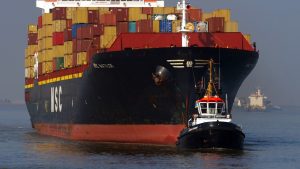
Why Cebu is a Shipping Hub in the Philippines?
Cebu has established itself as a prominent shipping hub in the Philippines for several reasons. Firstly, it boasts a strategic geographic location that makes it an ideal base for maritime activities. Situated in the center of the Philippine archipelago, Cebu is easily accessible from major ports around the country. This accessibility allows for efficient and cost-effective transportation of goods, making Cebu a preferred choice for shipping operations.
Additionally, Cebu offers state-of-the-art port facilities and infrastructure that cater to the needs of both domestic and international shipping companies. The city’s port is equipped with modern container terminals, which can accommodate large vessels and handle high volumes of cargo. Furthermore, Cebu’s ports are efficiently managed and well maintained, ensuring smooth operations and quick turnaround times.
Moreover, Cebu has a highly skilled workforce in the shipping industry. The local labor pool consists of experienced seafarers, engineers, logistics specialists, and other professionals who possess deep knowledge of maritime operations. With their expertise coupled with advanced technology and equipment available in Cebu’s ports, shipping companies can rely on this talent pool to optimize their operations effectively.
In conclusion, Cebu’s strategic location, prominent port facilities, and skilled workforce all contribute to its status as a key shipping hub in the Philippines. They enable efficient transportation, cost-effectiveness, and smooth handling of cargo. This means that tug and barge services based in Cebu play a crucial role in facilitating seamless shipping operations, promoting economic growth, and strengthening international trade in the region.
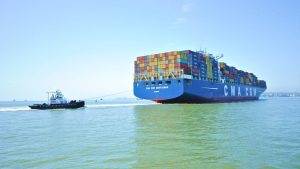
What is Cebu Famous For?
Cebu, an island province in the Philippines, is famous for its stunning beaches and crystal-clear waters. With popular destinations like Mactan Island, Bantayan Island, and Malapascua Island, it’s no wonder that Cebu has gained a reputation as a tropical paradise. However, this province is not just about sun, sand, and sea.
One aspect that sets Cebu apart is its rich cultural heritage. The province boasts historical landmarks such as Magellan’s Cross and Fort San Pedro in its capital city of Cebu City. These sites are remnants of the Spanish colonial period and provide a glimpse into Cebu’s past. Moreover, visitors can immerse themselves in the vibrant festivals held throughout the year that showcase the province’s religious traditions and local artistry.
When it comes to culinary delights, Cebu is known for its mouthwatering lechon (roast pig). The city takes pride in its deliciously crispy-skinned lechon, which has even been hailed as the best in the Philippines. Food enthusiasts should not miss out on trying this succulent dish when visiting Cebu. Additionally, local delicacies like danggit (dried fish) and dried mangoes make great take-home treats for tourists looking to savor the unique flavors of Cebuan cuisine.
While Cebu is renowned for its picturesque beaches and tropical beauty, it also offers so much more to those who explore beyond its shores. Its cultural richness, historical landmarks, and delicious cuisine make it a destination worth experiencing. Whether you’re a nature lover, history buff, or foodie, Cebu has something to offer everyone.
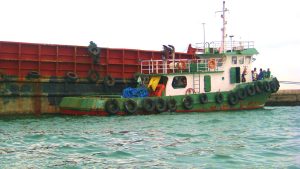
What are the Famous Ports in Cebu?
Cebu, known as the Queen City of the South, is home to several famous ports that play a crucial role in shipping operations. One of these is the Cebu International Port, which serves as a major gateway for both domestic and international trade. With its state-of-the-art facilities and strategic location, it has become a vital link in connecting Cebu to various parts of the world.
Another prominent port in Cebu is the Mactan Export Processing Zone (MEPZ), which specializes in export-oriented manufacturing industries. It provides easy access to major shipping routes, making it an ideal location for companies engaged in global trade. Moreover, MEPZ boasts extensive infrastructure and modern amenities that prioritize efficiency and convenience for its users.
Additionally, the port of Danao offers unique features that set it apart from others. Known as a hub for inter-island transport, Danao Port caters mainly to passengers traveling between Cebu and neighboring islands like Masbate and Leyte. Its proximity to popular tourist destinations also makes it popular among travelers looking for convenient transit options.
These famous ports in Cebu are not only vital economic hubs but also contribute significantly to facilitating smooth shipping operations across different sectors. They embody efficiency, innovation, and accessibility—key factors that make them indispensable components of the shipping industry in Cebu.
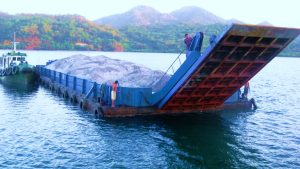
Final Thoughts: 7 Ways Tug and Barge in Cebu Can Help the Shipping Industry
In conclusion, tug and barge operations in Cebu have emerged as a crucial component of the shipping industry, offering numerous benefits that contribute to efficient maritime operations. Firstly, they provide reliable and cost-effective transportation solutions for heavy and oversized cargo that may be challenging to transport via traditional vessels. By utilizing tugs and barges, the shipping industry can accommodate diverse cargo requirements effectively.
Secondly, Tug and Barge in Cebu offers a sustainable alternative for reducing greenhouse gas emissions. The use of smaller vessels compared to large container ships results in lower fuel consumption and carbon footprints. This environmentally friendly approach aligns with global efforts to mitigate climate change by promoting greener transportation options.
Moreover, Tug and Barge in Cebu play a vital role in supporting local economies by facilitating trade within the region. They enable businesses to transport goods efficiently across islands or coastal areas without necessarily relying on extensive infrastructure development or expensive logistics systems. This accessibility fosters economic growth by ensuring connectivity between different locations and promoting business activities along the coastlines.
Overall, it is evident that Tug and Barge in Cebu have revolutionized maritime operations by providing reliable transportation solutions for various industries while also promoting sustainability initiatives through reduced emissions. Their contribution extends beyond just convenience and empowers local economies as well. As future developments continue to shape the shipping industry’s landscape, it is essential to acknowledge the integral role tugboats and barges play in driving efficiency and growth within this sector.

